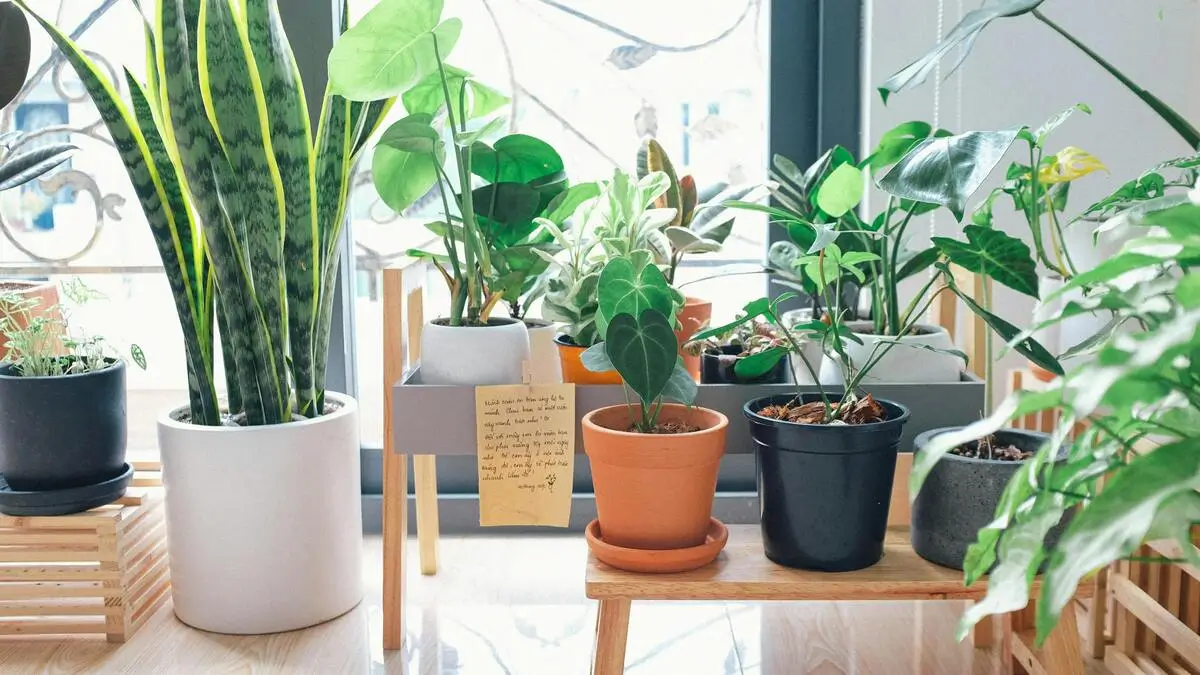Houseplants can transform any space, adding vibrancy, texture, and a natural aesthetic that enhances home decor. Beyond their beauty, they also purify the air and create a sense of calm. But while a single plant can make a statement, thoughtfully combining different varieties elevates the visual appeal even further. Designing decorative plant arrangements is an art that requires careful selection, planning, and placement. When done right, these arrangements can become the focal point of a room, bringing harmony and sophistication to any setting.
Whether you’re a plant enthusiast or just starting your journey, learning how to arrange multiple plants together can help you cultivate a truly stunning indoor garden. With the right mix of beautiful indoor plants, you can create lush, eye-catching displays that complement your home’s design and your style.
Understanding the Basics of Houseplant Arrangements
Before diving into plant combinations, it’s essential to understand what makes an arrangement visually pleasing. Houseplant groupings should consider balance, contrast, and proportion like floral design. The interplay between foliage textures, leaf shapes, and growth habits is crucial in how a display comes together.
One key principle is the “thriller, filler, and spiller” method, often used in container gardening. A “thriller” plant is the centerpiece—a taller, eye-catching variety like a fiddle leaf fig or dracaena. “Fillers” are medium-height plants that add volume, such as ferns or pothos. “Spillers” are trailing plants that cascade over the edge of a container or shelf, like a string of pearls or ivy. Using this structure helps create visually balanced arrangements with depth and movement.
Light requirements also matter. Mixing sun-loving succulents with shade-preferring ferns in the same arrangement can lead to frustration when one plant thrives while another struggles. To ensure success, group plants with similar lighting and watering needs together.
Choosing Complementary Plant Combinations
Certain plants naturally complement each other when paired together. The key is to look for plants with contrasting but harmonious features. Here are a few stunning combinations to try:
Tropical Elegance
A lush combination of monstera, bird of paradise, and calathea creates an exotic, jungle-like atmosphere. The broad, fenestrated leaves of monstera contrast beautifully with the upright growth of the bird of paradise, while calathea adds color with its intricate leaf patterns. This trio thrives in bright, indirect light and enjoys humidity, ideal for bathrooms or well-lit living rooms.
Desert Serenity
A mix of succulents and cacti brings your home a modern, minimalist feel. Try arranging echeveria, haworthia, and a small golden barrel cactus in a low, wide pot filled with well-draining soil. Their different textures—smooth, spiky, and rosette-shaped—create a visually interesting but low-maintenance arrangement perfect for sunny windowsills.
Classic Greenery
If you love a timeless, elegant look, opt for a combination of snake plants, peace lilies, and pothos. These plants are all known for their adaptability and air-purifying qualities. Their different heights and leaf shapes create a balanced, cohesive display that works well in various home styles.
Hanging Beauty
For those looking to maximize vertical space, a hanging arrangement with Boston ferns, a string of hearts, and spider plants creates a stunning cascading effect. These plants are all relatively easy to care for and bring a soft, flowing aesthetic to corners, shelves, or hanging planters.
Creative Display Ideas for Houseplant Arrangements
Once you have selected the right plants, the next step is choosing an arrangement style that fits your home decor. Here are some unique ways to display your combinations:
- Terrariums: Glass terrariums create miniature ecosystems that add a whimsical touch to any room. They work well for small tropical plants like ferns, mosses, and succulents when designed with proper drainage.
- Plant Stands and Pedestals: Elevating plants at different heights using plant stands, shelves, or pedestals creates a more dynamic and layered look. This method is excellent for arranging plants in corners or near windows.
- Tabletop Arrangements: Grouping smaller plants in decorative bowls or trays makes for an elegant centerpiece on coffee tables, dining tables, or office desks. Varying pot heights and materials can add depth and texture to the display.
- Floating Shelves: Installing floating shelves and populating them with trailing plants and upright foliage can create a lush, cascading effect on a blank wall, making it a living work of art.
- Mixed Planters: Using large decorative planters to house multiple plants creates a unified look. Select plants with similar watering needs to prevent one from outgrowing or outcompeting the others.
Caring for Your Houseplant Arrangements
Once your decorative arrangement is in place, proper care is essential to keep your plants healthy and thriving. Here are some critical tips to maintain your display:
- Watering Wisely: Different plants have different hydration needs. If your arrangement includes plants with varying moisture requirements, consider using separate pots within a larger container or grouping plants with similar needs. Overwatering is one of the most common causes of plant decline, so always check the soil moisture before watering.
- Providing Adequate Light: Houseplants thrive when placed in the right lighting conditions. If natural light is limited, supplement with grow lights to ensure all plants receive enough energy for healthy growth.
- Rotating for Even Growth: Turning your plants every few weeks helps them grow evenly and prevents them from leaning toward the light source.
- Pruning and Maintenance: Trim yellowing leaves, dust off foliage regularly, and repot plants when they outgrow their containers. Keeping your plants well-maintained ensures they continue to enhance your decor.
- Monitoring for Pests: Houseplants can sometimes attract pests like spider mites or fungus gnats. Inspecting your plants regularly and using natural remedies like neem oil can help keep them pest-free.
Conclusion
Combining houseplants to create decorative arrangements is a rewarding way to enhance your home’s ambiance while fostering a connection with nature. Thoughtfully curated plant groupings bring texture, color, and life to any space, whether through lush tropical displays, minimalist succulent collections, or cascading hanging plants. You can design stunning plant compositions that elevate your living environment by selecting complementary species, experimenting with creative arrangements, and maintaining proper care.
Whether you prefer bold statement plants or delicate trailing vines, the possibilities are endless when arranging houseplants to reflect your style. So start experimenting and transform your home into a thriving indoor oasis filled with greenery and charm.


